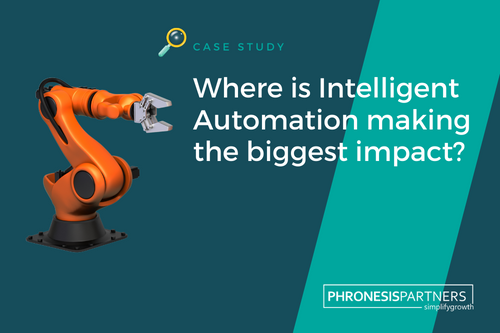This research showcases how Phronesis’ research helped a global ERP software company navigate the complexities of AI adoption across different functional areas within organizations.
We executed in-depth analysis of current AI usage and future trends, including the critical role of value-added resellers and system integrators, leveraging a mix of desk research and quantitative surveys. Our findings enabled the company to identify high-potential AI adoption areas, strategically enhance their product offerings, and better position themselves against competitors.
Objective
A global ERP software company, operating in more than 180 countries with over 100,000 employees, wanted to assess how organizations use AI across different functional areas. It also wanted to forecast AI usage trends for the next two years and evaluate the role of value-added resellers and system integrators in facilitating the deployment of AI.
Approach
Phronesis conducted a global survey of businesses across the Americas, Europe, and APAC, covering a range of industries and different functional areas.
Desk Research: The first research phase was to understand the current and emerging landscape of AI usage in organizations, including key AI solutions, and industry and function-specific applications. The findings were essential to the design of quantitative surveys in the next research phase.
Quantitative Surveys: In this phase, Phronesis leveraged quantitative research to understand AI adoption at a macro level, providing a comprehensive view of current trends across the business landscape.

We evenly distributed samples by country, region, and revenue size across mid-size and large businesses to ensure sample representativeness and facilitate comparative analyses.
All survey participants were screened to ensure they were from organizations that use at least one technological solution provided by the company, whether in a specific functional area or as an enterprise-wide solution.
The quantitative survey gathered insights into five broad information areas including:
Current adoption and use of AI, including use by functional area explored:
- The extent of AI use within organizations
- The use of AI across different functional areas and specific activities within each functional domain where AI is implemented. e.g., invoice matching by Finance, sales forecasting by Sales & Marketing
- AI applications with the most potential
- Reasons for not using AI where it could deliver potential advantages
- Organization’s AI focus level:
- The extent of senior management support – enterprise-wide implementation, implementation for selected use cases, or no mandate
- AI implementation maturity stage*
- AI implementation budget size
- AI’s Business Priority Level
* A 4-stage AI maturity model was employed to assess the level of AI maturity, where the most advanced stage entails having a well-defined vision and strategy for AI implementation aligned with organizational objectives.
The role of value-added resellers and system integrators in driving the adoption of AI explored:
- The types of AI tools used:
- Custom vs commercial
- Purchase channels – direct from the client, direct from competitors, via VARs, system competitors’ system integrators, and business advisory firms
- Current AI solutions and the business/IT advisory firms involved in their acquisition
- Current expenditure on AI
- Planned AI expenditure and use over the next 24 months
- Expected change in AI expenditure
- Information sources on client partners and their attitudes towards them
Generative AI
- The use of generative AI by different functional areas such as contract review for finance and employee training for HR
- Current expenditure on Generative AI and expected change in expenditure over the next 24 months.
Output
The data was analyzed by region, revenue, size of organization, and AI purchase channels, and the findings were presented through an online reporting tool. The in-depth insights from Phronesis research included:
- A detailed overview of current AI implementation levels within organizations and anticipated short-term AI trends
- Identification of functional areas with high AI adoption potential
- The company’s partner resellers’ strengths and weaknesses, and effectiveness in promoting its AI tools and solutions
- Identification of organizations more likely to adopt AI, segmented by region and revenue
- Identification of the top commercial AI vendors, validated through secondary data.
- The key areas where Generative AI adoption was highest
Impact
Phronesis’ research identified the increasing importance of AI and Generative AI within organizations, predicting a substantial increase in adoption and investment over the next two years. This enabled the company to identify high-potential AI adoption areas, strategically enhance its software solutions, and provide use cases to its sales & marketing teams to engage potential adopters and better position themselves against competitors.
This is the latest in a series of research projects undertaken by Phronesis to help this global ERP software company understand the AI space, and it has led to a further project testing the company’s AI product roadmap.
Author: Yusof Ahmad, Head of Methodology, Phronesis Partners


